The National Cancer Institute’s Center for Cancer Research reports that around six million dogs in the U.S. are diagnosed with spontaneous cancer every year. While a better understanding of canine nutrition and advanced veterinary technology is prolonging the average dog’s lifespan, the risk of developing cancer increases as a dog ages. Recent reports indicate about half of dogs over 10 years old are diagnosed with some type of cancer.1 We must take it upon ourselves as concerned pet parents to know the warning signs of canine cancer.
Dogs get cancer at around the same rate humans do, but the disease tends to progress faster for our canine friends. The key to fighting it has always been early detection. Without the ability to voice their feelings, dogs often go undiagnosed. Sometimes their disease shows no symptoms until it’s too late for medical intervention to help. In many cases, however, an observant owner can save their dog’s life.
Regardless of your dog’s age, breed, or perceived health, it’s important to know about these common signs of cancer.
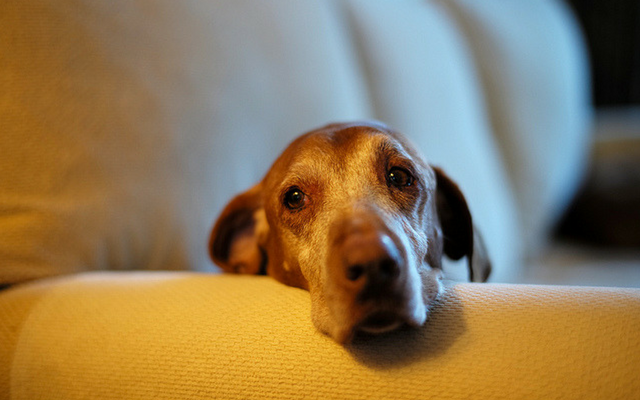
#1 – Unidentifiable Lumps
One of the easiest cancer symptoms to recognize is the presence of a tumor growing beneath the skin. Sometimes lumps are benign cysts, but an unusual growth always warrants a trip to the veterinarian. The lump needs to be removed and tested for the presence of cancer.
Just as there are several different kinds of cancer, there are several kinds of cancerous tumors. Mast cell tumors grow quickly and tend to itch and look inflamed. Snub-nosed dog breeds like Boxers and French Bulldogs develop this type of tumor more than other breeds. Other types of tumors include histiocytoma tumors that are typically small and hairless, and tumors related to lymphoma are characterized by lymph node swelling under the jaw and behind the knees.6
Veterinarians encourage dog owners to inspect their pets’ skin at least once a month. Tumors can be large, but a small lump the size of a breath mint can be equally as dangerous.

#2 – Sudden Weight Loss
As long as the dog isn’t on a strict diet, their weight should remain relatively steady. Noticing weight loss is easiest in small dogs that are picked up often and dogs with short hair. A good way to quickly judge a dog’s weight is to look at them from above to see if their waistline looks more defined than it used to be. You can also palpate their sides regularly to feel how close their ribs are to their skin.
It’s harder to judge weight loss in big dogs with lots of fur. A 70-pound rough Collie with progressing cancer could be losing weight, but their fur and the lack of a convenient scale could mean the symptom goes unnoticed. For these dogs, it’s important to either bring them to the vet regularly for check-ups or devise a method of checking their weight at home.
#3 – Lack of Appetite
Sometimes dogs push away their dinner when they have an upset stomach, and they’re usually back to eating within a day. Dogs that don’t act hungry for more than two days at a time, however, could be dealing with something more serious.
A tumor pressing against the intestines is a common reason why dogs stop eating. Food going through a cramped intestine is uncomfortable, and the dog quickly decides not eating is the way to make themselves feel better.5 If it’s cancer, regaining appetite is essential for recovery. Cancer will drain the body’s energy and make it harder for the immune system to fight back. Nutrients derived from food will be essential to keep up the dog’s strength.
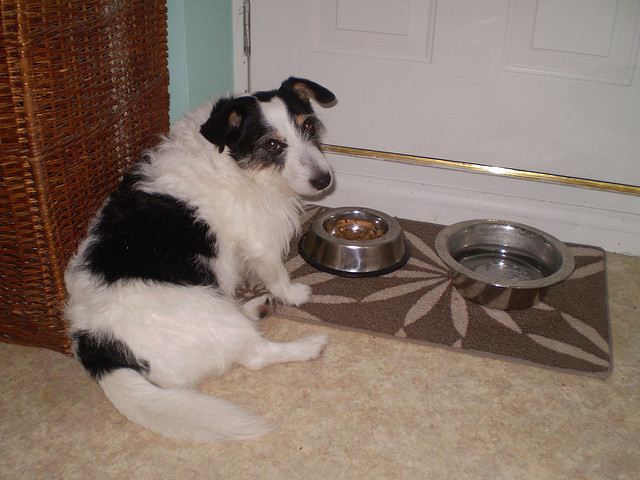
#4 – Stiffness or Lameness
It’s normal for senior dogs to slow down, and trouble standing up, walking, or climbing stairs could be due to osteoarthritis. There’s also a chance painful movements are caused by bone cancer called osteosarcoma.
Osteosarcoma is a tumor that develops on the bone. It can affect any bone in the body but is most often found near the shoulders and knees. In the beginning stages, the tumor may not be noticeable by looking at the dog. It will, however, affect how they move. Canine Cancer explains,
“Osteosarcoma develops deep within the bone and becomes progressively more painful as it grows outward and the bone is destroyed from the inside out. Lameness may occur suddenly or start intermittently and progress over several weeks. Obvious swelling becomes evident as the tumor grows and normal bone is replaced by tumorous bone.”
#5 – Lethargy
It’s normal for a dog to spend a few hours a day snoozing. Most dogs sleep between 12 and 14 hours a day.3 That number will ultimately depend on your dog’s age, breed, and personality, but too much sleep or a sudden decrease in activity could be a sign of cancer.
The main difference between normal exhaustion and lethargy has to do with the dog’s enthusiasm level. A dog that’s simply tired will drag themselves off the couch with a wagging tail for the chance at food or to play their favorite game. A lethargic dog, however, will lose all interest in their favorite things. Their reactions to things that would normally excite them are either delayed, strained, or they don’t react at all.
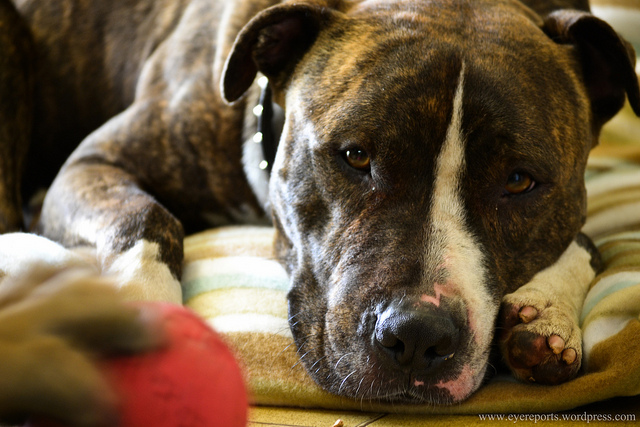
#6 – Open Sores That Don’t Heal
A sore on the dog’s skin that lasts for months without healing needs to be seen by a veterinarian. The wound can be crusty and bleed randomly when irritated. Antibiotics and topical creams won’t help it go away, and it can be located in any area of the dog’s body including toes, scrotum, and nose.
Scottish Terriers, Boxers, Poodles, Dalmatians, Beagles, and Whippets are considered high risk for this type of cancer, and dogs with white fur and light-colored skin are also more at risk.8
According to PetMd,
“A squamous cell carcinoma is a type of cancer that originates in the squamous epithelium. It may appear to be a white skin mass, or a raised bump on the skin. Often the raised mass will necrotize in the center and ulcerate, with occasional bleeding.”
#7 – Changes in Bathroom Habits
Going to the bathroom more than normal, less than normal, and not at all are all signs of trouble. In most cases, urination problems relate to conditions affecting the kidneys, bladder, or urethra. Cancer in the rectum, anus, colon, and intestines often causes constipation, diarrhea, and other changes in the dog’s stool. It’s possible for a dog to be defecating normally but stop urinating, and vice versa.5
If you notice your dog seems strained or in pain while doing their business, there could be a tumor causing problems somewhere in the digestive tract. It’s also important to inspect a dog’s feces on a regular basis. Stool that is black, tarry, or has blood in it could be a symptom of cancer.
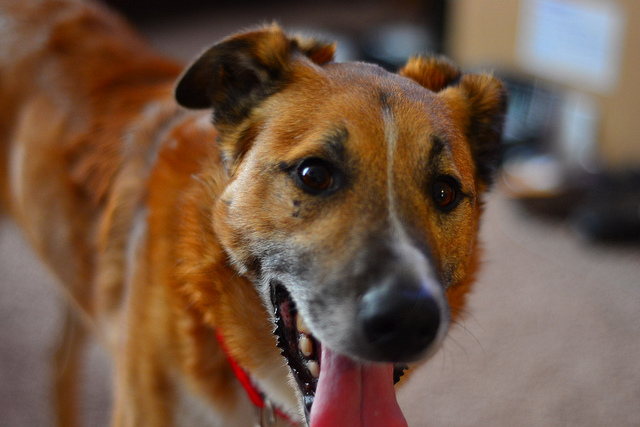
#8 – Breathing Difficulties
There are several different types of cancer that affect the respiratory system. Lung cancer most often develops in dogs 10 years and older, but all dogs are susceptible to having malignant tumors in their lungs and other parts of the respiratory tract. Symptoms usually present as labored breathing and shortness of breath.7
The dog might also develop a persistent cough, and their normal breathing can sound wheezy. You might notice your usually athletic dog gets winded after only a few minutes of jogging. Dogs that exhibit abnormal panting might also have cancer affecting their respiratory system. PetMD advises,
“Owners should get a feel for what is normal for their dogs before any health problems develop. How does your dog breathe when he is at rest? While going for a walk? After vigorous play? With this knowledge in hand, you will be able to pick up subtle changes in your dog’s respiratory rate and effort before a crisis develops.”
#9 – Unusual Smell
Gas and bad breath are usually harmless, but exceedingly bad smells coming from the dog’s mouth or anus could mean something more. Tumors in the anus, mouth, or throat open a window for bacterial growth and can produce smells. Some dog owners assume their pets are especially gassy, but there’s the possibility the bad smells originate from a tumor in the rectum.
Oral cancer is difficult to treat and progresses quickly. Tumors are most often found on the roof of the mouth and around the upper teeth.4 You might also notice your dog eating their food without chewing or only chewing on one side of their mouth to avoid a tender area.
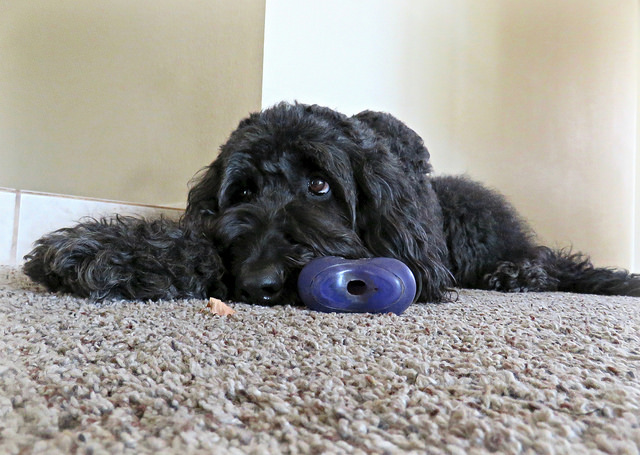
#10- Behavioral Changes
A dog’s behavior is a clear indication of how they’re feeling. If your gentle, happy dog is suddenly acting aggressively, it could be because they’re in pain. When dogs don’t feel well, they tend to withdraw. Being jostled and touched in sore areas can cause them more pain, and they lash out to keep people away.
A dog that used to love being picked up or having their stomach rubbed might start avoiding human contact. It’s easy to take their behavior personally, but it’s their way of telling you something isn’t right. Internal tumors can go unnoticed for months, and the longer they’re left to grow, the more damage they cause. A slight change in a dog’s behavior is often the only external indication that cancer is wreaking havoc on the dog’s health.
Sources
1. AVMA
2. Canine Cancer
3. The National Sleep Foundation
4. My Pet’s Dentist: Oral Tumors in Cats and Dogs
5. Pet Health Network: 10 Signs of Cancer in Dogs
6. PetMD: 8 Types of Tumors and How to Treat Them
7. PetMD: Breathing Difficulties in Dogs
8. PetMD: Skin Cancer in Dogs
9. The National Cancer Institute’s Center for Cancer Research
 Toledo, United States.
Toledo, United States.